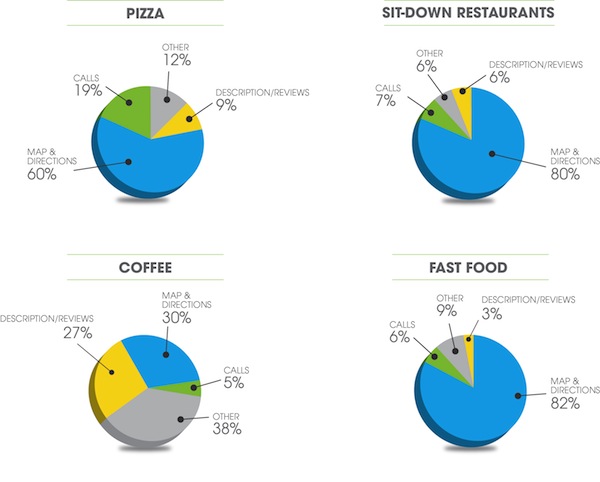If you’re like most digital marketers, you engage in advertising to achieve one of two goals – either to generate or increase awareness (for your brand, a new product, etc.) or to generate new leads or customers. The metrics used to measure each of these goals vary dramatically, both in type and complexity.
Effective reach measurements are typically straightforward and are easy to measure as the data deals with the reach and delivery of ads, easily captured through third party tracking tags or passed through by the publisher or ad network themselves. If it is brand and/or offer awareness or lift you seek – a simple brand lift study can remedy this with minimal time and investment.
Lead measurement on the other hand is often very complex for the simple fact that every business measures them differently. Despite this fact, the most common metrics used in the digital world to measure this type of performance are:
- Clicks.
- Calls.
- A completed online form or process.
Marketers have the value of these three actions down to a science – the higher intent metrics being the most valuable. For instance, clicks are usually considered the least valuable as only a small percentage converts to an actual lead or a sale. Whereas calls and completed forms are the most valuable as they show true intent to engage with the business.
In mobile, there is a new engagement metric that is largely overlooked by marketers new to the space that is just as valuable, if not more valuable as a qualified lead measure, a call or completed forms: The access of map and driving directions. These actions are of great value, as the act of clicking through to view map and driving directions demonstrates a high level of user intent to convert through an offline visit to a store or business location.
Research tells us that the majority of consumers are on-the-go when accessing mobile content and as a result demonstrate more urgent or immediate needs. In fact, according to findings from the recent Mobile Path-to-Purchase study, up to 85 percent of mobile users look for map and driving directions as a result of a mobile search – with the majority of these actions resulting in an ultimate purchase.
But the value of map and driving directions vs. clicks or calls varies from mobile category to category. To best demonstrate this unique behavior, let’s look at the secondary action (actions that occur after the initial ad click) activities from two categories – travel and restaurants – as they cover a range of mobile user purchase intent.
The travel industry consists of three distinct subcategories – Hotels, Airline, and Car Rental. While overall mobile user interaction with the travel category was found to be part of a longer research process, the hotel subcategory demonstrates increased urgency in user secondary actions. More than three-quarters of mobile travel users download map and driving directions when looking to convert with hotels, while both airline and car rental activity was dominated by calls.
This information is essential in placing proper value on the performance achieved through mobile advertising.
To judge a hotel campaign’s success on click to call alone and not take into account map and driving directions would not only be a disservice to both the advertiser and the publisher but ultimately result in lower campaign performance than was actually achieved. At the same time, measuring airline and car rental campaign success on just clicks without including calls would miss the deeper interaction conducted by more than 70 percent of the audience.

The same can be seen with restaurants, a mobile category that demonstrates a higher overall sense of urgency. More than 30 percent of smartphone users are looking to convert with a Restaurant immediately, and user intent to convert doubles within an hour (according to the xAd/Telmetrics Mobile Path to Purchase Study).
For this reason we see high overall engagement with map and driving directions, as users are on the go and looking for both speed and convenience in finding their next meal. But a dive into the restaurant subcategories shows important variation that further supports the need for secondary action measurement specific to intended audiences.
Fast food and sit-down restaurant activity reveals that more than 80 percent of users prefer to utilize map and driving directions in searching for the nearest quick serve restaurant (QSR) or fine dining establishment, while nearly 20 percent of users seeking pizza prefer to click to call their nearest pizza joint – no doubt to place a pick up or delivery order.
The variation in secondary actions between QSR, sit-down, and pizza restaurants aligns with their respective business models – an essential element to take into consideration when planning campaign success metrics.
Coffee shops, on the other hand, seem to be the black sheep of the restaurant category, demonstrating a wider range of secondary action usage including map and driving directions, calls and just as important reviews. Now imagine if mobile campaign measurement for a coffee house was judged on the same secondary action metrics as a pizza delivery business!
The need for distinction between category and subcategory audiences is clear and essential in placing a value on mobile secondary actions as leads.

So with all this industry variation, how do you effectively measure lead performance in mobile? By ensuring every conversion rich activity is properly tracked and accounted for when both planning and optimizing for performance, as well as recapping campaign successes.
Just as mobile is an increasingly important part of the marketing mix, all secondary actions must be included in the conversation to ensure campaigns are built and held to more appropriate, performance-driven benchmarks that take full advantage of mobile’s unique capabilities.

